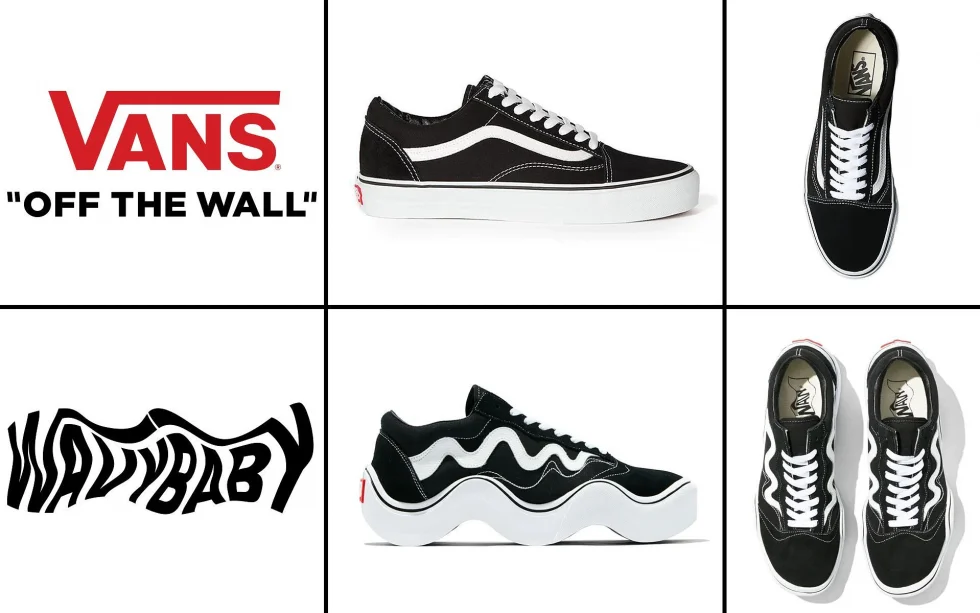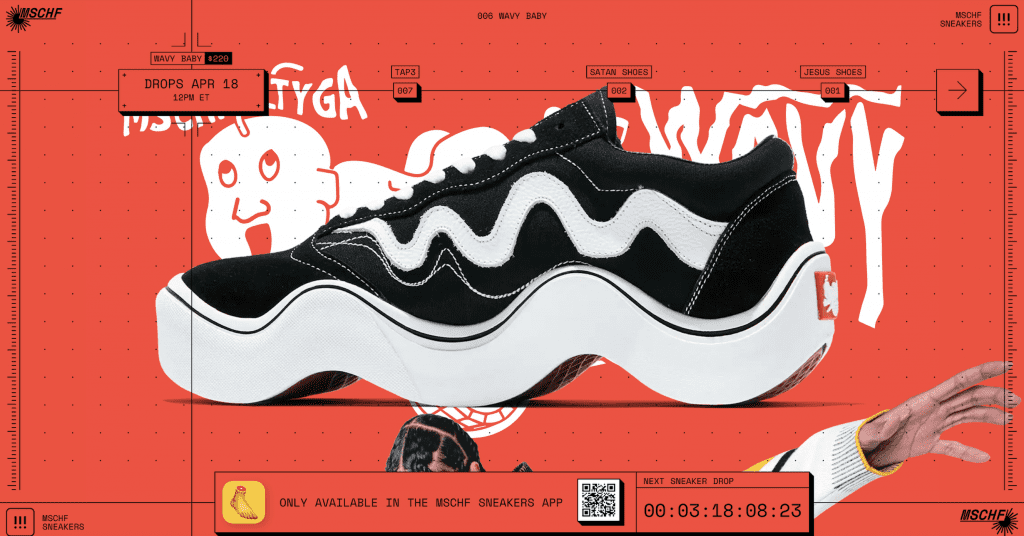The trademark case that Vans is waging against art collective MSCHF over the latter’s Wavy Baby sneakers will stand still pending the outcome of a separate trademark case that will get Supreme Court attention next year. On the heels of oral arguments, which took place in September, the U.S. Court of Appeals for the Second Circuit stayed further proceedings in the case until the after SCOTUS issues an opinion in Jack Daniel’s v. VIP Products, a trademark case that similarly hinges on whether a consumer (err … pet) product is an expressive work entitled to First Amendment protection. In the “Bad Spaniels” case, as it has been coined, that product is a dog toy that resembles a Jack Daniel’s whiskey bottle, which VIP Products has argued should be shielded from infringement and dilution liability due to its humorous nature.
The Supreme Court granted certiorari in that case in November after the Ninth Circuit reversed the district court’s finding that VIP Products’ toy infringed and diluted Jack Daniel’s marks, and held – in accordance with the Rogers test – that the toy is an expressive work entitled to First Amendment protection. Counsel for Jack Daniel’s has characterized the appeals court’s decision as a departure “from the decisions of every other circuit to decide this question,” while the International Trademark Association asserted in an amicus brief that the Ninth Circuit improperly expanded the traditionally limited application of Rogers “to the use of trademarks on any commercial good arguably having some ‘expressive’ quality.”
In briefs in Bad Spaniels and the MSCHF cases, the trademark group has asked SCOTUS to rein in the test that enables “would-be infringers to avoid [trademark] liability merely by claiming they have incorporated some expression into their products that simultaneously misappropriate another’s mark.”

The Supreme Court justices are expected to answer two questions in taking up the Bad Spaniels suit: (1) Whether humorous use of another’s trademark as one’s own on a commercial product is subject to the Lanham Act’s traditional likelihood-of-confusion analysis, or instead receives heightened First Amendment protection from trademark-infringement claims; and (2) Whether humorous use of another’s mark as one’s own on a commercial product is “noncommercial” under 15 U.S.C. § 1125(c)(3)(C), thus barring as a matter of law a claim of dilution by tarnishment under the Trademark Dilution Revision Act.
As for MSCHF, Eastern District of New York Judge William Kuntz stated this spring that “whatever the artistic merits of the Wavy Baby shoes [are],” they “do not meet the requirements for a successful parody,” and sidestepped the application of the Rogers test. The case, nonetheless, focuses on Rogers, with counsel for the Brooklyn-based company citing Rogers in its answer in June and arguing that the Wavy Baby project “references Vans’ trademarks and trade dress in an artistic work in a manner that has artistic relevance to the work without being explicitly misleading.” MSCHF also asserted that the “Wavy Baby is a parody and therefore, is not likely to cause confusion.”
More recently, before the Second Circuit (which agreed to take on expedited appeal of Kuntz’s preliminary injunction order), MSCHF’s counsel claimed that the Wavy Babys amount to “expressive works” that are not meant to be worn, but instead, were designed to serve as commentary on sneaker culture and Vans’ role in it.
Rogers on Repeat
Not the only cases relying on a Rogers argument, the test – which came out of the Second Circuit in 1989 – has been argued in Hermès v. Rothschild, with MetaBirkins creator Mason Rothschild asserting that Hermès’s trademark infringement and dilution claims should be dismissed, as Rothschild’s “fanciful depictions of fur-covered Birkin bags and his identification of his artworks as ‘MetaBirkins’” meet the “low threshold of minimal artistic relevance,” and that there is “nothing explicitly misleading about Rothschild’s depictions of Birkin bags, his use of the ‘MetaBirkins’ name as the title of his art project” and/or his use of the term on his website and social media accounts. The court agreed (in a memorandum order in May) that the Rogers test was applicable, but still refused to toss out Hermès’s claims.
At the same time, the test has also been pointed to by Ryder Ripps in the trademark case that Yuga Labs waged against him. C.D. Cal. Judge John Water recently disagreed with Ripps’ arguments, stating in an order on December 16 that the Rogers test does not apply in the Bored Ape Yacht Club NFT-centric case, as “the defendants’ sale of what is admittedly a ‘collection of NFTs that point to the same online digital images as the BAYC collection’ is the only conduct at issue in this action and [it] does not constitute an expressive artistic work protected by the First Amendment.”
Still yet, Southern District of New York Judge Colleen McMahon found that Rogers applies in the case that dozens of big-name models filed against Vogue owner Condé Nast and e-commerce retailer Moda Operandi, stating this summer that there is “no question that Vogue’s use of photos [of the models], taken on the runway, in a summary document about the season’s new fashions intends an ‘artistic’ and non- commercial purpose,” noting that Vogue’s use of the photos does not “explicitly mislead as to the source or content of the work.” As such, the judge determined that Condé’s use of the imagery “easily falls within the safe harbor of the Rogers test.”
The case is Vans, Inc. v. MSCHF Product Studio, Inc., 1:22-cv-02156 (EDNY).











